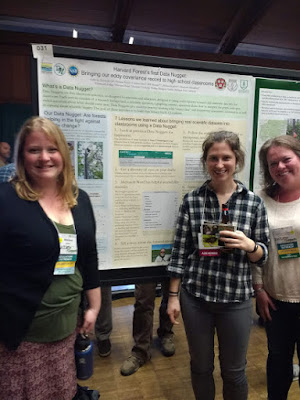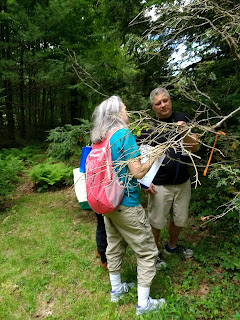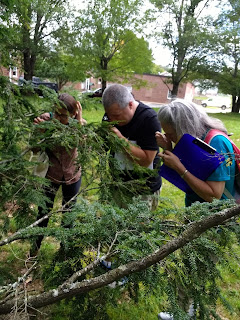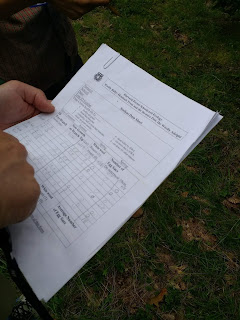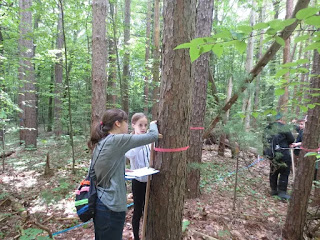First Year Teachers work with Harvard Forest Data Manager, Emery Boose
Emery Boose will present an overview of how Schoolyard Ecology data is managed using the Harvard Forest Schoolyard Eco. Online Database.
Level I teachers will learn how to
use the Harvard Forest online
graphing tools to represent their
project data.
 First year teachers will have an oportunityto input their project data with support of Harvard Forest mentors.
First year teachers will have an oportunityto input their project data with support of Harvard Forest mentors.

Harvard Forest Mentors work side by side with
teachers to support them in reaching their
graphing goals.


Level II Teachers will practice graphing
Schoolyard Data using a set of structured
graphing activities to learn graphing skills and
see examples of the kinds of graphs that
work well for representing their data.
Level III Teachers will will work on their
individual predetermined graphing goals.
Harvard Forest Mentors will help trouble
shoot and offer advice in achieving those
goals in best organizing and representing their
data.
TO REGISTER:
Email Pamela Snow, Harvard Forest Schoolyard Ecology Coordinator with your Project name, School name and the Level you want to register for.
Registration Deadline is Tuesday, December 18th.
Experienced Teachers work with Ecologist, Betsy Colburn to learn how to look at their project Data.
How to organize data into tables and graphs in order to see what the data is saying.Harvard Forest Mentors work side by side with
teachers to support them in reaching their
graphing goals.
Level II Teachers will practice graphing
Schoolyard Data using a set of structured
graphing activities to learn graphing skills and
see examples of the kinds of graphs that
work well for representing their data.
Level III Teachers will will work on their
individual predetermined graphing goals.
Harvard Forest Mentors will help trouble
shoot and offer advice in achieving those
goals in best organizing and representing their
data.
AGENDA for Jan. 4th Workshop:
Email Pamela Snow, Harvard Forest Schoolyard Ecology Coordinator with your Project name, School name and the Level you want to register for.
Registration Deadline is Tuesday, December 18th.










